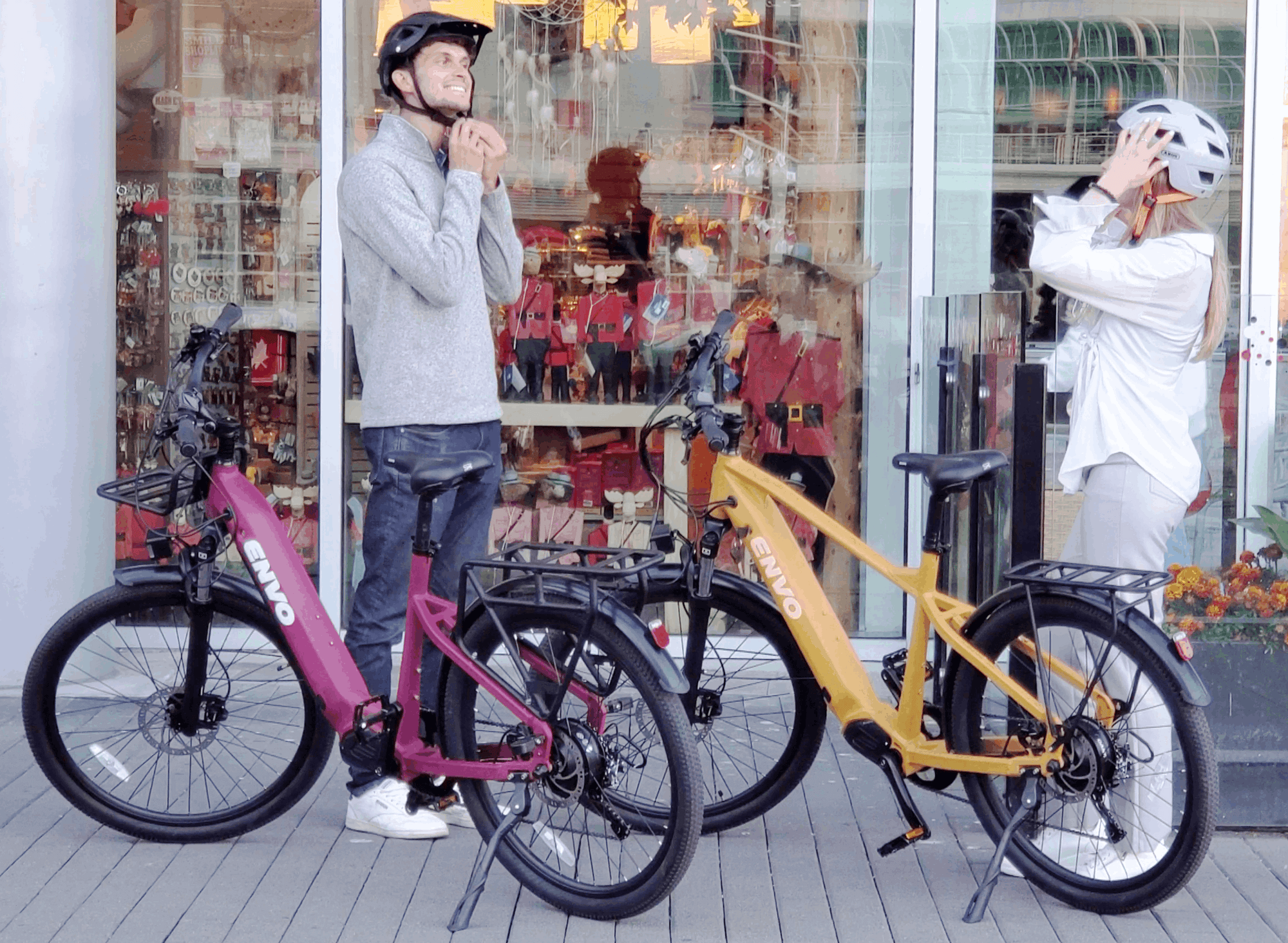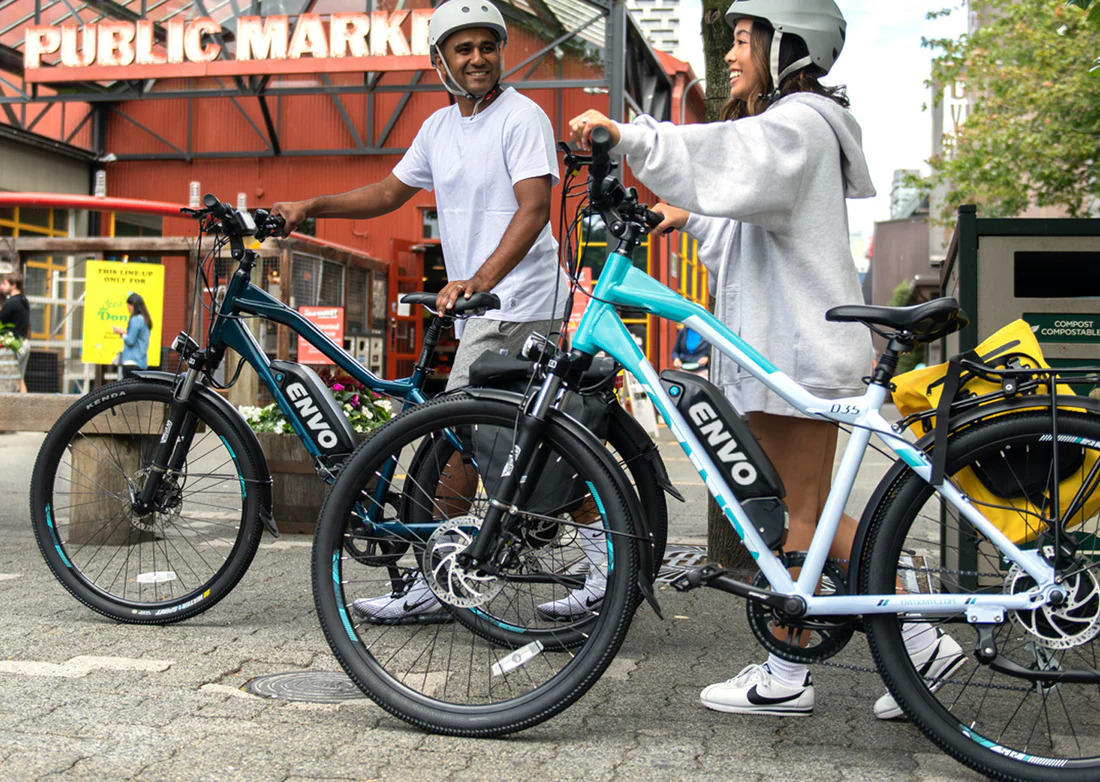Riding an Electric Bike for the First Time (20 Tips for Beginners)
Posted by Smart Wheel on 29th May 2024
Riding an electric bike for the first time can be a thrilling experience, offering a convenient and eco-friendly mode of transportation. It's important to familiarize yourself with the basics of electric bike riding to ensure a safe and enjoyable journey when starting to ride. From learning the bike's controls to practicing proper safety measures, several tips can help beginners drive their first electric bike riding experience with confidence.
20 Tips for the Beginner E-Bike Riders
Multiple things are important to consider when riding for the first time. These things are essential for the rider's safety and smooth ride. Below is a list of some of those important tips for beginners:
1. Know Your Bike’s Range

Electric bikes have a limited battery range, so plan your routes accordingly. Check the bike's range before setting out and consider bringing a backup battery or charger for longer rides.
Pro Tip: Most e-bikes have a battery indicator on the display. Keep an eye on it, and aim to recharge when it hits 20%
2. Obey Traffic Laws

The same traffic laws are applied to electric bikes as regular bicycles in Canada. Familiarize yourself with local regulations, such as speed limits, helmet requirements, and where you can ride.
3. Practice Braking and Handling
Electric bikes can accelerate quickly, so practice braking and handling in a safe, open area before driving on busy streets. Get comfortable with the bike's responsiveness and stopping distances.

4. Stay Visible
Equip your bike with lights, reflectors, and bright clothing to increase your visibility to other road users, especially at night or in low-light conditions.
5. Maintain Your Bike

Regular maintenance is crucial for the durability and performance of your electric bike. Follow the manufacturer's recommendations for battery care, tire pressure, and general maintenance.
6. Protect Your Battery

Extreme temperatures can damage your electric bike's battery. Store and charge the battery in a cool, dry place, and avoid leaving it exposed to extreme heat or cold.
7. Take a Slow Start

If you're new to electric bikes, start with shorter, easier rides to get comfortable with the bike's handling and power. Gradually increase your distance and difficulty as you gain experience.
Pro Tip: A fast start can lead to the loss of control of the bike causing many injuries.
8. Stay Alert
Keep your eyes and ears open for potential hazards, such as vehicles, pedestrians, and animals. Always be prepared to react quickly and avoid distractions while riding.
9. Adjust Your Riding Position

Maintain a comfortable and stable riding position, with a slight bend in your elbows and knees. This will help you maintain control and balance on your electric bike.
10. Carry Essential Tools
Keep a basic toolkit with you, including a multi-tool, tire levers, and a pump, to handle minor repairs or flat tires on the go. Whenever the bike goes out of its function at a time when no mechanic is available to solve the problem, this tool kit can help with temporary repair.
11. Familiarize Yourself with Your Bike's Features
Take the time to understand your electric bike's features, such as assist levels, display, and controls, to make the most of its capabilities and ride more efficiently.
12. Inspect Your Bike Before Each Ride
Perform a quick safety check before every ride, ensuring that the brakes, tires, lights, and other components are in good working condition.
13. Invest in Quality Safety Equipment

Wear a helmet, gloves, and protective clothing to ensure your safety on the roads. A firm helmet can prevent severe head injuries, and gloves can protect your hands from scrapes and cuts.
14. Manage Your Weight Distribution
Distribute weight evenly on your electric bike to maintain balance and control. Avoid overloading the front or rear of the bike, and secure any cargo properly.
15. Consider Your Bike's Suspension

If your electric bike has suspension then learn how to adjust it properly for your weight and riding conditions to ensure a smooth and comfortable ride.
16. Choose Appropriate Footwear
Wear shoes with good grip and stiff soles to improve pedaling efficiency and prevent foot fatigue. Avoid loose or slippery footwear that could get caught in the pedals.
17. Consider Cycling-Specific Outfit
Invest in cycling-specific clothing designed for the unique movements and positions of riding an electric bike. These garments are often cut to minimize friction and improve comfort.
18. Learn to Manage Your Battery

Check for your battery's charge level and range to avoid running out of power during your ride. Consider carrying a backup battery or charger for longer trips.
19. Protect Your Head and Face

You should consider wearing a cycling cap or headband to shield your face from the sun and keep sweat out of your eyes. These things will be present in addition to the helmet.
20. Watch for Obstacles

Keep an eye out for potholes, debris, and other obstacles on the road that could cause you to lose control or damage your bike. Ride defensively and anticipate potential hazards.
How to Take Care of an Electric Bike as a Beginner (Newbies Guide)
The maintenance of the device is extremely crucial and it depends on the proper usage as well as the quality of materials used in maintenance. This will provide you with a longer life of your product and a smooth riding experience.
- Clean the bike, and wipe after rides. Lubricate the chain, and moving parts.
- Check pressure, and adjust as recommended. Inspect tread, and replace if worn.
- Check brake pads, and replace them if worn. Adjust cables for optimal braking.
- Inspect spoke tension, and wheel true for a smooth ride.
- Inspect chain wear, and stretch. Replace if needed to prevent drivetrain wear.
- Install fenders to stay dry, and prevent debris buildup.
- Check wiring, connectors, lights for damage and loose connections.
- Replace worn, slippery grips for control and comfort.
- Check the frame for cracks, dents, and damage. Repair or replace if needed.
- Maintain suspension per manufacturer for comfort, and control.

